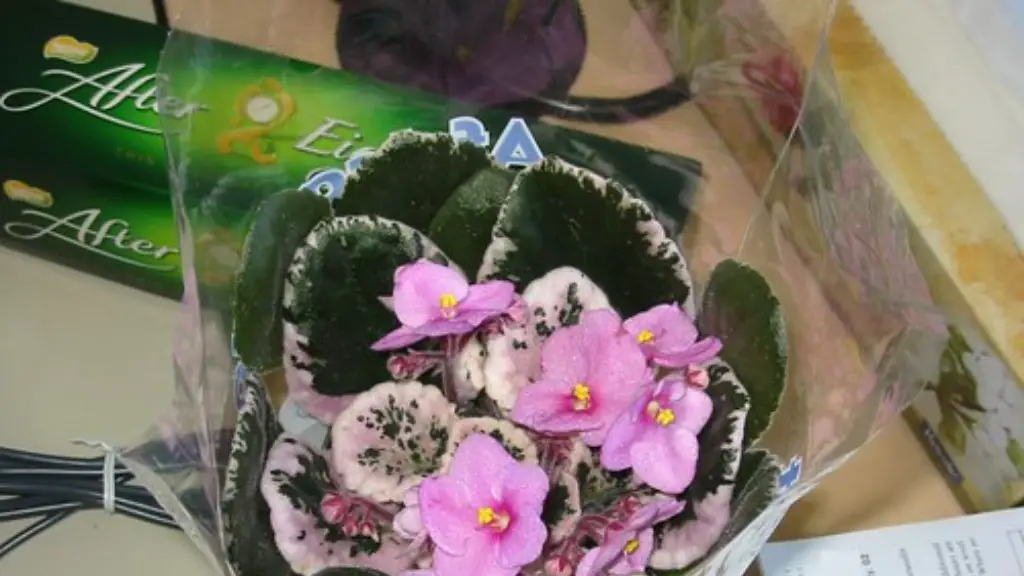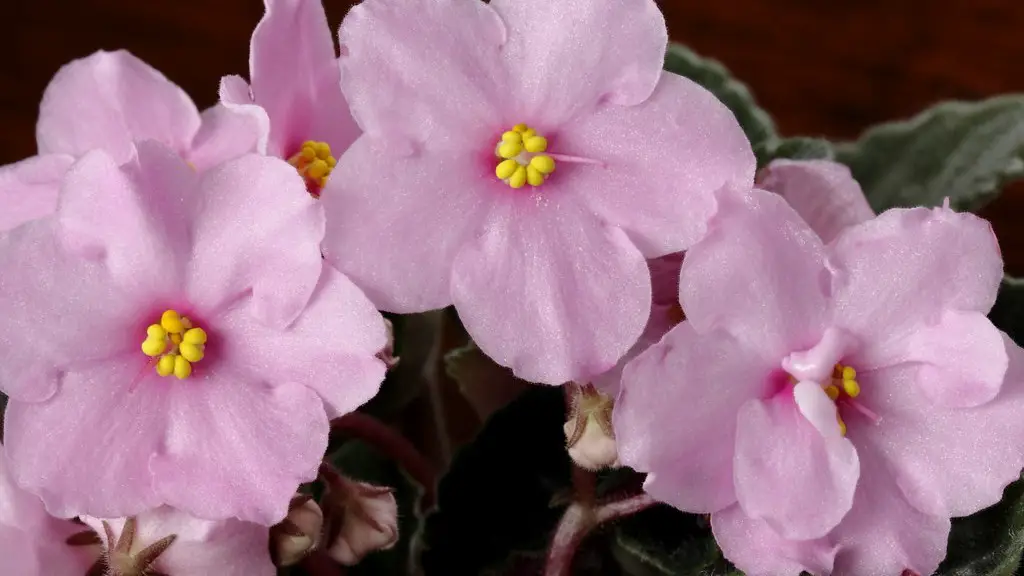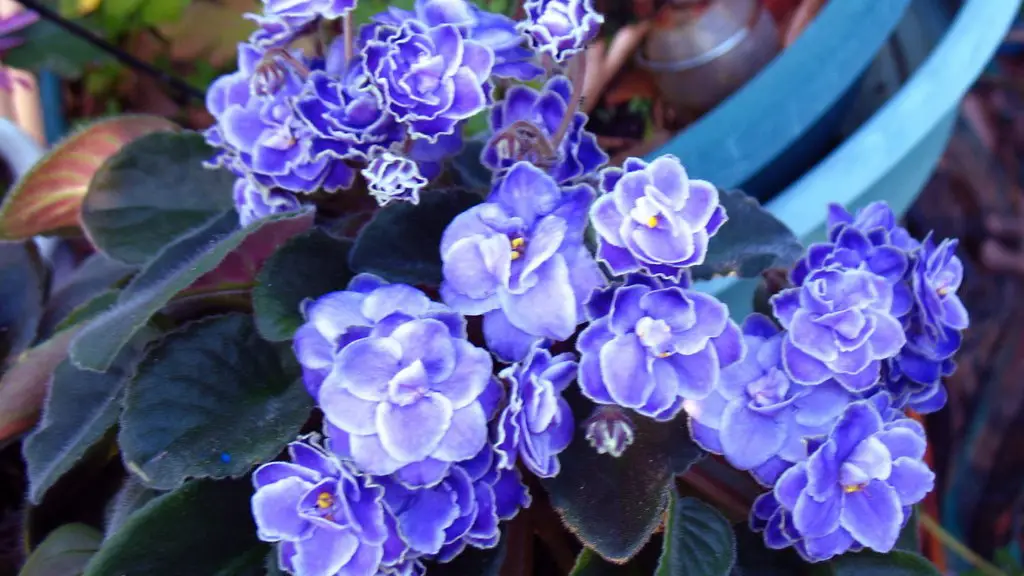African violets (Saintpaulia ionantha) are tropical plants native to Tanzania. They are small plants with fuzzy leaves and flowers in shades of purple, pink, and white. African violets are popular houseplants because they are easy to grow and care for.
African violets need bright, indirect light to thrive. They can be placed in a windowsill that gets plenty of light, or near an east- or west-facing window. If you live in a warm climate, you can also grow african violets outdoors in a shady spot.
African violets need to be watered regularly, about once a week. The soil should be moist but not soggy. Allow the top of the soil to dry out before watering again. When watering, be sure to avoid getting water on the leaves, as this can cause brown spots.
Fertilize African violets every two weeks with a water-soluble fertilizer designed for houseplants. Apply the fertilizer at half the recommended strength to avoid burning the roots.
African violets will bloom year-round with proper care. To encourage more blooms, deadhead spent flowers and provide adequate light and fertilizer.
African violets need pretty bright light, but not direct sunlight. They will do best near a sunny window.
Where is the best place to put an African violet?
To get the best color and blooms from your plants, grow them in bright, indirect light. A plant stand three feet away from a west- or south-facing window is an ideal location. Plants will still grow when situated right beside north- or east-facing windows, but leaves will be thin and spindly, and plants less likely to bloom.
African violets need bright light to bloom, but cannot tolerate hot, direct sun because their leaves are easily scorched by intense light. Violets bloom best at temperatures from 65 to 75 degrees.
How do I know when my African violet needs more light
If your African violet isn’t getting enough sun, it’ll let you know. Keep an eye out for yellowing leaves, leggy stems, and stunted bloom growth, the telltale signs that your plant is undernourished and needs more sun to stimulate healthy photosynthesis processes.
If you want your African Violet to flower and grow optimally, it needs to receive at least 8 hours of indirect light per day. The light can be quite bright, as long as it’s indirect. The optimal light intensity for African Violets is 900-1100 foot-candles, or 10-20,000 lux.
How often should a African violet be watered?
A wicking system is a great way to make sure your African violets are never over watered. By setting up a wicking system, you can water your African violets once a week and allow the plant to completely dry between waterings.
It is important to water African violets carefully, as they are susceptible to crown rot. Do not mist the foliage, as this may cause permanent leaf spotting. Use room-temperature water, and avoid getting the crown of the plant wet.
Should African violets be watered from the bottom?
If you are unsure whether to water your African violet from the top or bottom, either is fine. However, it is important to use lukewarm or warm water, as cold water can shock the plant. If you do water from the top, be sure to avoid getting water on the leaves when the plant is in direct sunlight, as this can cause leaf spots.
African violets need to be slightly pot-bound in order to thrive, so it’s best to choose a pot that’s on the smaller side. If you have a standard African violet plant, your starter pot should be about 3-4 inches in diameter.
Is it best to water African violets from the bottom
Watering your plant is essential to keeping it healthy and encouraging blooming. You should water from the bottom, using room temperature water, and allow the soil around the roots to dry out before watering again. This will encourage blooming.
If you want your amaryllis to flower, give them bright, indirect sun. Too little sunlight will cause them to stretch for the light and produce few or no flowers; too much sun can burn the leaves. An east-facing window is ideal, especially with a sheer curtain to block the sun’s harshest rays. They also need eight hours of darkness every night.
How do you encourage African violets to bloom?
If your African violet is not blooming, it is likely because it is not getting enough light. African violets need indirect sunlight, direct sunlight can burn the leaves. Choose a north- or east- facing window for best results. Keep plants away from cold glass and rotate the pot once a week so all leaves receive light.
If your African violet has burnt or dry leaf tips, it’s likely dehydrated. Try placing your plant on a humidity tray to boost the moisture in the air. If your African violet has drooping leaves, it may be suffering from low temperatures. Keep your indoor environment around 70 degrees Fahrenheit, even at night.
Why do you water African violets from the bottom
To keep your African Violet healthy, water from the bottom so the roots can soak up the water. Keep the soil moist, but never soggy. Warmer water, around 70 degrees, is best for African Violets.
If you have an African Violet plant, you can place it in a tray, bowl, or saucer filled with water. Make sure that at least one inch of the bottom of the pot is submerged in water. Allow the plant to absorb the water for 20 minutes. This will help to moisten the topsoil.
What pots are best for African violets?
If you’re looking for the best pots for African violets, you can’t go wrong with the Mkono 3 Pack Self Watering Plastic Planter, the Ceramic Pot with Saucer, the Blue Self Watering Ceramic Planter, or the Aquaphoric Self Watering Planter. Each of these pots is specifically designed to provide optimal drainage and aeration for your plants, and the self-watering feature is an added bonus that will help to keep your plants healthy and hydrated.
It’s important to be aware of the quality of your tap water when watering your African violets. Chlorine levels can fluctuate depending on the season and location, and high levels of chlorine, chloramines, or dissolved solids can all be harmful to your plants. To be safe, it’s best to use filtered or distilled water for your African violets.
Warp Up
In general, African violets need bright, indirect sunlight. They can tolerate some direct sunlight, but too much direct sunlight can scorch their leaves.
African violets need bright, indirect light. The leaves of the plant can help to know if the plant is getting too much light; if the leaves are yellow, it is getting too much light.




